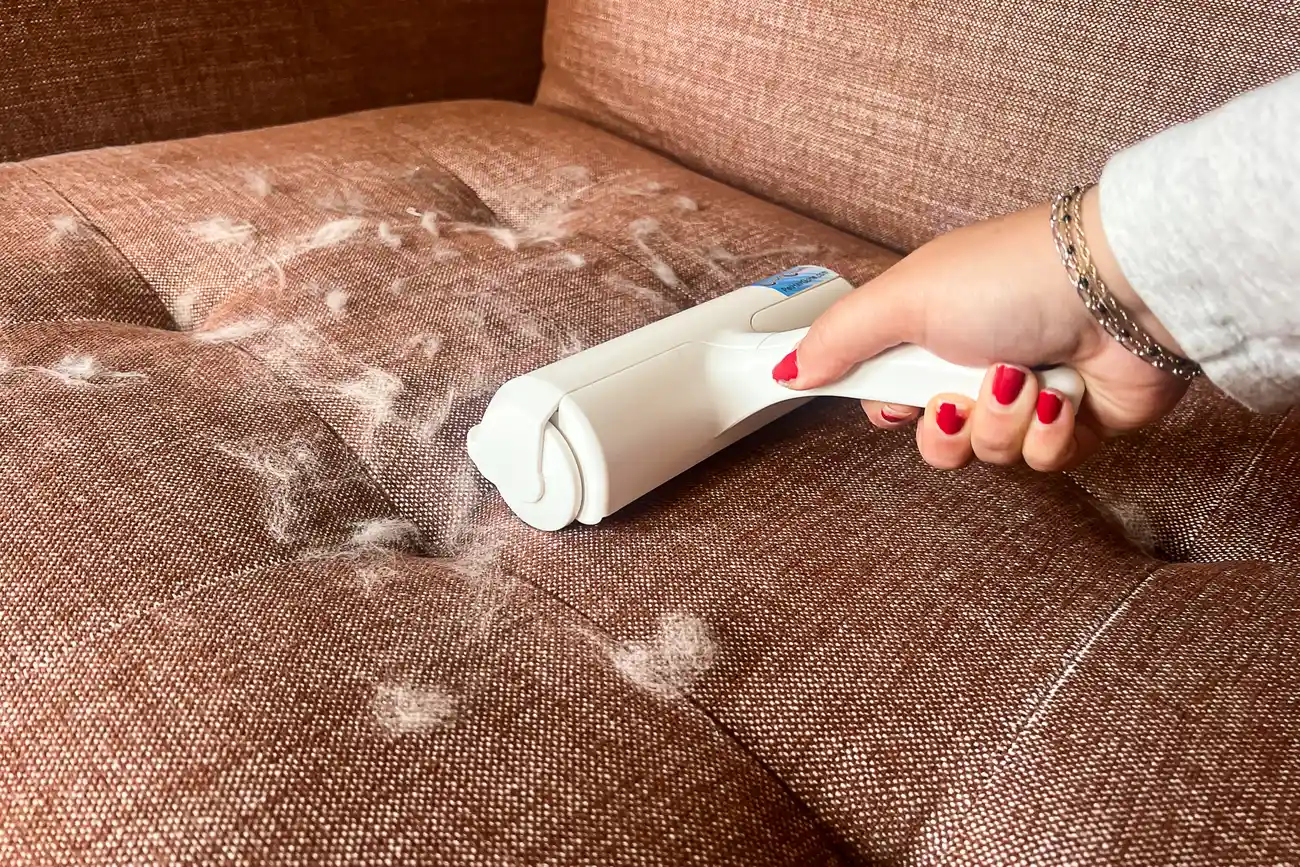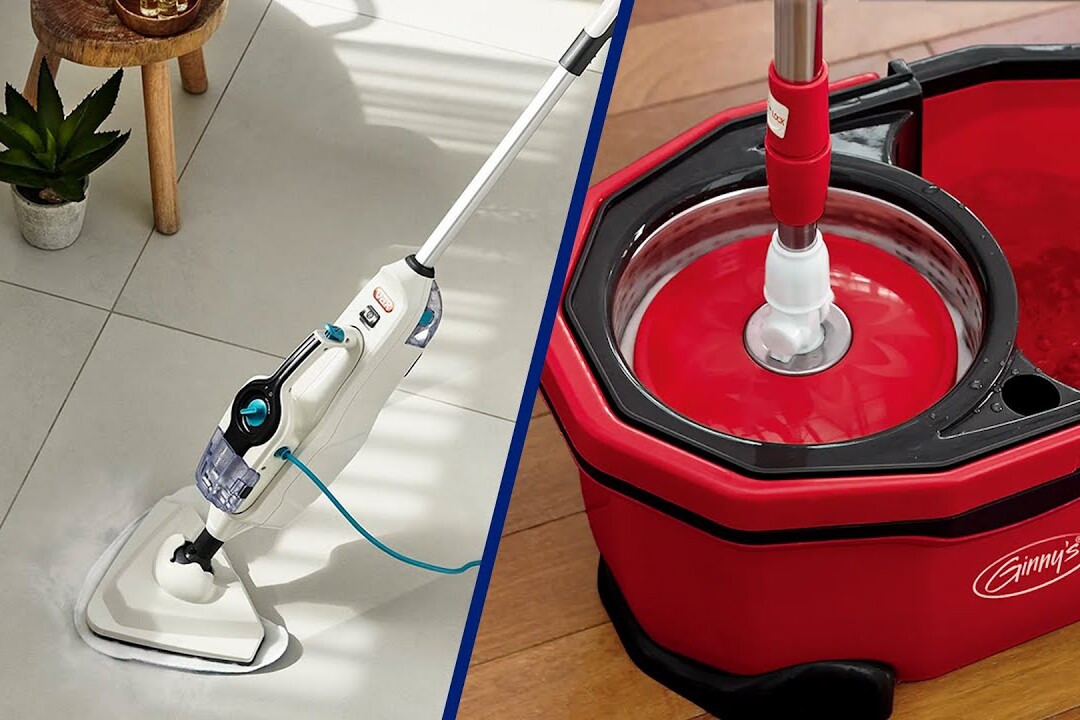Have you ever found yourself looking out of the window in a daze? Windows are the eyes to any building’s soul, they say, and the lens through which we see the outside world. But most of us don’t think about our windows until the day sunlight hits them at the right angle and suddenly every streak, smudge, and fingerprint shows itself. Have our windows been silently weeping? For apartment dwellers, especially those living in high-rises, the problem is even worse—some windows feel almost impossible to reach safely. Homeowners with tall bay windows, skylights, or conservatories face similar struggles. And businesses with glass storefronts or office towers spend thousands each year just to keep their windows looking presentable.
Our eyes have been cloudy, and so have been our insides. Clean windows make interiors brighter, improve mood, and even boost curb appeal and property value. In fact, real estate professionals often note that sparkling glass makes homes look newer, better maintained, and more inviting. Yet, for all their importance, windows are one of the least frequently cleaned areas of most properties.
Why? Because it’s inconvenient, time-consuming, and in many cases, risky.
- For homeowners, cleaning tall or exterior windows means dragging out ladders, buckets, and sprays—and hoping the results don’t leave streaks anyway.
- For apartment residents, particularly on upper floors, cleaning the outside of windows can be downright dangerous. Many either leave them dirty or pay for expensive professional services.
- For businesses, glass isn’t just decoration—it’s brand image. A dirty window in a café or retail shop is immediately visible to customers. But frequent professional cleaning contracts quickly eat into profits.
Traditional solutions like paper towels and sprays, or even extendable squeegees, can’t fully solve the problem. And professional cleaning services, while effective, can cost anywhere from £200–£500 per session in the UK (or $300–$600 in the US) for mid-sized properties. Multiply that by several times a year, and the expense is ongoing.
That’s why the idea of owning an Autonomous Window-Glass Cleaning Robot feels like more than a gadget—it feels like your automatic substitute in modern home care. Just as robot vacuums transformed how we clean floors, and robot mops simplified hard-to-reach spots, this device brings automation to one of the most frustrating and often risky chores: window cleaning without the fear of falling to your death!
Imagine pressing a button on your phone and watching a compact robot cling to your glass, map out its surface, and systematically remove every smudge, streak, and spot. Whether you live in a top-floor flat or manage a commercial storefront, the robot does the work while you carry on with your day. No ladders. No streaks. No hassle. Just a tiny automaton Tom Cruise that came in a box.
This isn’t science fiction—it’s the natural evolution of home automation. With suction technology, microfiber pads, water or eco-cleaning solution sprayers, and AI-powered pathfinding, the Autonomous Window-Glass Cleaning Robot makes spotless glass a hands-free reality. And unlike human cleaning, it never rushes, never misses a corner, and never puts anyone at risk. And it accepts the mission every time and also accomplishes it, unlike Ethan Hunt!
Windows may not be top of mind in daily life, but when they’re dirty, everyone notices. With this innovation, crystal-clear glass becomes the default, not the exception.
The Problem With Traditional Window Cleaning
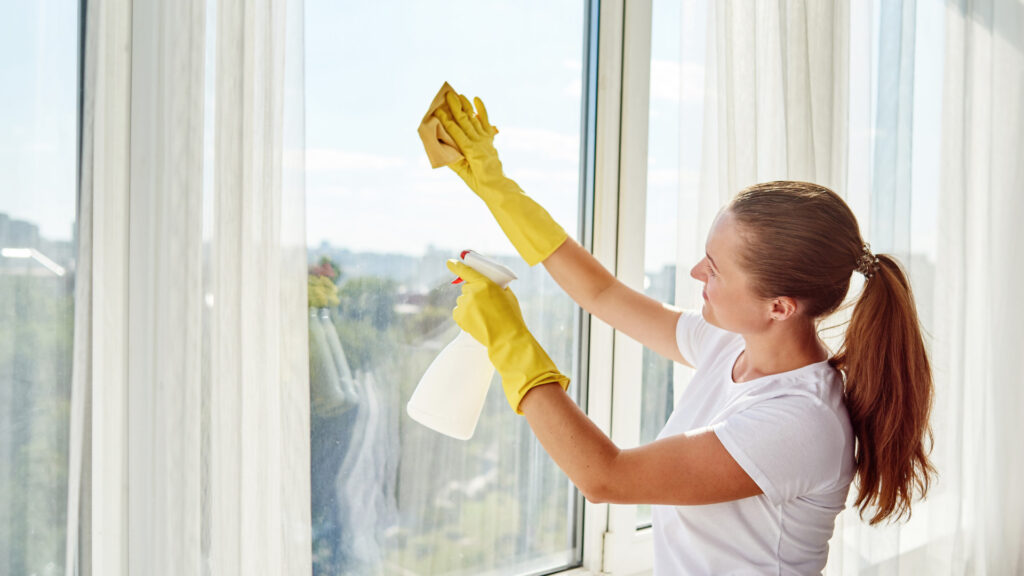
So why get it? Cleaning windows is one of those chores everyone dreads, and for good reason. It’s physically demanding, often unsafe, and the results are rarely perfect. No matter how much effort you put in, streaks and spots seem to reappear the moment sunlight hits the glass. Let’s take a look at a handful of issues that you may have come across if you’re a cleaning nut:
1. The Ladder Problem
For houses with tall windows, skylights, or conservatories, cleaning usually means dragging out a ladder. Not only is this inconvenient, but it also introduces serious safety risks. According to home safety data, ladder-related falls are among the most common household accidents. For elderly homeowners or those with limited mobility, the danger outweighs the benefit entirely.
2. The Streak Struggle
Anyone who has tried paper towels, sprays, or even vinegar-water mixtures knows the frustration: streak-free cleaning is harder than it looks. Different cloths leave lint, hard water stains cling stubbornly, and greasy fingerprints require repeated scrubbing. Even after an hour of effort, the results often fall short of the sparkling finish you wanted.
3. Accessibility Issues
Apartment dwellers face a different challenge altogether. Cleaning the outside of windows above the ground floor is often impossible without leaning dangerously far out or hiring professionals. Many people simply resign themselves to living with dirty windows for months on end because the alternative feels too risky. The thought of broken bones, yikes!
4. Professional Cleaning Costs
For offices, retail spaces, or apartment buildings, the common solution is to hire professional cleaners. While effective, this approach comes with high recurring costs. A mid-sized office with glass facades might spend £200–£500 per visit (or $300–$600 in the US), several times a year. For high-rises, costs climb even higher due to specialized equipment and safety crews. Over time, window cleaning becomes a major line item in maintenance budgets.
5. Time & Effort
Even in smaller homes, cleaning windows is a chore most people put off simply because it’s so time-consuming. Moving furniture to reach indoor panes, carrying buckets, swapping cleaning cloths, and scrubbing corners can take hours—only for dust, pollen, and fingerprints to build up again within weeks.
Why Traditional Solutions Fail
You’ve probably guessed why it fails. The biggest issue with all traditional window-cleaning methods is that they are reactive, manual, and repetitive. You wait until dirt is visible, then spend time, money, or effort to deal with it—knowing the cycle will repeat. There’s no way to make window cleaning consistent, safe, and hassle-free without automation.
That’s exactly where the Autonomous Window-Glass Cleaner Robot dances in. It doesn’t just solve the problem—it eliminates the cycle of dread and delay by keeping windows spotless automatically. Cue robot dance moves!
What Is the Smart Window-Glass Cleaning Robot?
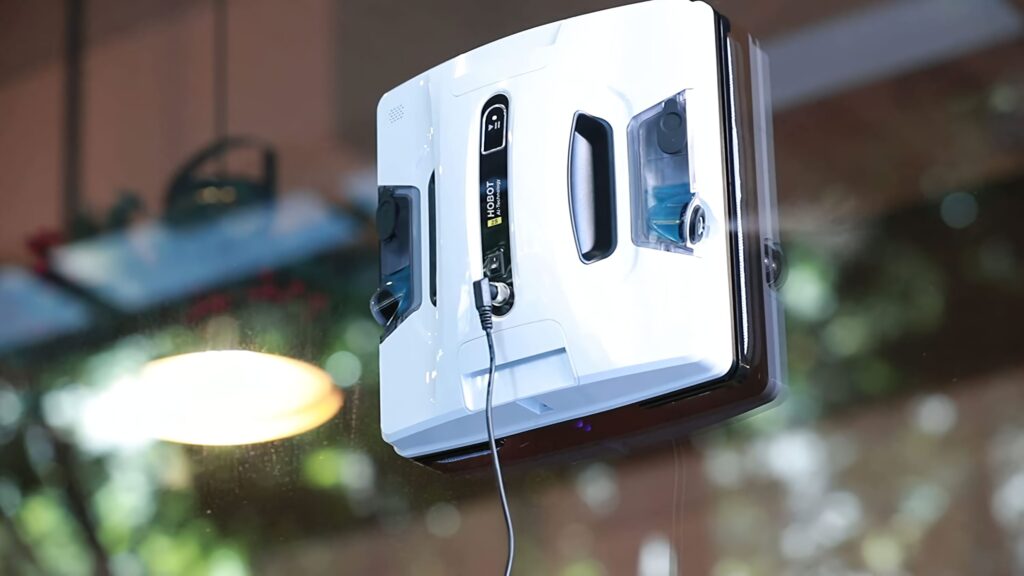
At first glance, the idea of a robot that can climb and clean windows might sound futuristic, but the concept is surprisingly practical. Just as robot vacuums and robot mops transformed floor care, this device brings the same level of automation and intelligence to one of the most frustrating household chores: cleaning glass.
The Autonomous Indoor & Outdoor Window-Glass Cleaner Robot is a compact, suction-powered device that attaches directly to your glass surfaces. Once secured, it maps out the window area and begins a systematic cleaning routine. It doesn’t matter whether the window is tall, awkwardly placed, or located on the 15th floor—the robot handles it safely, without ladders or human risk. Woot. Woot.
1. How It Sticks and Moves
The core of the system is a powerful vacuum suction module that allows the robot to cling securely to vertical glass. For high-rise applications, an optional magnetic dual-robot setup places one unit inside and one outside, clamping together through the glass to ensure an even stronger grip. Once attached, the robot uses AI path planning (similar to robotic vacuums) to clean in a systematic zig-zag or spiral pattern, ensuring complete coverage.
2. The Cleaning Process
Okay, so the robot isn’t just a moving sponge like tech-noobs imagine it to be. It’s engineered for streak-free results:
- Rotating microfiber pads remove dust, pollen, and fingerprints.
- A built-in spray nozzle distributes water or an eco-friendly cleaning solution evenly ahead of the pads.
- Edge brushes sweep corners and frames where pads struggle to reach.
- A squeegee finish leaves the glass sparkling without streaks.
The combination of mechanical cleaning and smart fluid distribution ensures results that rival professional cleaners. Are robots taking away our jobs? This one, many would gladly pass on.
3. Built-in Intelligence
What makes this robot more than a gadget is its intelligence:
- Sensors detect edges and obstacles (like window handles or frames) to prevent collisions.
- AI algorithms analyze dirt levels and double-clean areas that need extra attention.
- App control lets you schedule cleans, monitor progress, and even pause or resume from your phone.
- Integration with Alexa and Google Assistant makes it part of your wider smart home ecosystem.
4. Safety Features
Because safety is critical, the robot is designed with multiple fail-safes:
- A tether cord prevents it from falling in case suction is lost.
- Battery backup provides 20–30 minutes of suction in the event of a power outage.
- Rain/light sensors automatically pause outdoor cleaning in unsuitable weather.
The Big Picture
The Autonomous Window-Glass Cleaning Robot isn’t about turning a luxury into a novelty—it’s about solving a very real problem in a way that’s safe, efficient, and cost-effective. For homeowners, it replaces ladders and sprays. For apartment dwellers, it removes the risk of leaning dangerously out. And for businesses, it reduces the recurring costs of professional cleaning crews.
In short, it’s the future of window cleaning—quiet, intelligent, and always ready when your glass needs attention. If only there was a way to make it look like Ethan Hunt–Hmm?
Real-World Use Cases: How a Window-Cleaning Robot Fits into Everyday Life
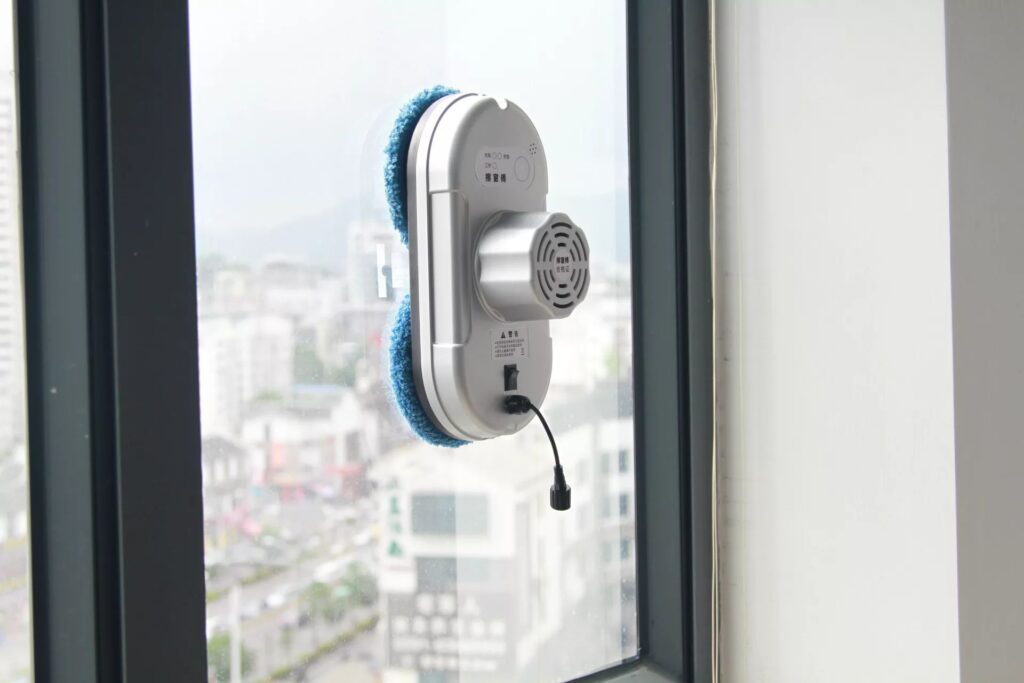
Technology only earns its place in our homes if it solves real frustrations. The Autonomous Window-Glass Cleaning Robot is more than a novelty—it’s a time-saver, a safety tool, and in many cases, a money-saver. Here’s how it transforms daily life for different types of users.
1. The Busy Homeowner
Emma lives in a modern home with large bay windows and a glass conservatory at the back. While the design floods her living space with natural light, it also creates a constant cleaning headache. Dust, rain spots, and fingerprints build up quickly, especially with two young children who just love pressing their hands against the glass and checking out their prints.
In the past, Emma spent hours every month hauling a ladder into the garden, balancing a spray bottle and squeegee, and still ending up with streaks. Hiring professional cleaners was an option, but at £200 per session, it felt like “are you out of your mind?” for a single-family home.
Now, with the Smart Window Robot, she simply attaches it to the conservatory glass and starts the cleaning via her phone. While the robot quietly zigzags across the glass, Emma gets on with preparing dinner. By the time she’s finished cooking, the conservatory windows are spotless—without her lifting more than a finger.
For her, it’s not just about clean windows. It’s about reclaiming precious time.
2. The High-Rise Apartment Resident
Daniel lives on the 15th floor of a London apartment building. He’s cool, he’s suave, and he’s definitely successful. His biggest boast that has turned into a constant frustration? He has floor-to-ceiling windows with a breathtaking view of the city—but cleaning them was a nightmare. Leaning out with a spray bottle felt unsafe, and professional high-rise window cleaners only serviced his building twice a year. Between visits, his once-panoramic view was dulled by dust and watermarks. He now thinks he lives in Mad Max and has slowly regressed into looking like him.
With the Pro version of the Window Robot, which uses a magnetic dual-unit system (one inside, one outside), Daniel finally has control. The robot clamps securely through the glass and handles the cleaning on both sides simultaneously. For the first time, Daniel can keep his view clear year-round, without risking his safety or waiting months for the next professional cleaning crew. No more madness around here.
3. The Elderly Homeowner
Margaret is 76; she does not think she’s old, but her body tells her otherwise. She loves her home’s design with tall windows and a sunroom. But as she’s gotten frailer, cleaning them has become more than inconvenient—it’s dangerous. One little pop and she knows it’s a trip to the hospital. Climbing ladders is no longer an option, and her children worry every time she tries.
Her son gifted her the Home Model of the robot. Now, instead of struggling, Margaret simply attaches the device to her living room window and taps “start” on the app. The robot does the climbing and scrubbing, while she enjoys her tea.
For Margaret, it’s about independence. She doesn’t need to rely on others for something as simple as keeping her home bright and welcoming.
4. The Small Business Owner
Amelia runs a café on a busy high street. Her front windows are her shop’s calling card—passersby decide whether to come in based on how clean and inviting the space looks. But with outdoor traffic, smudges from kids passing by and trailing their fingers for fun, and weather exposure, her windows were always dirty. Professional cleaning twice a month was costing her £3,000+ a year, cutting into already thin margins.
Now, she schedules the robot to run a full clean every night after closing. In the morning, her café always looks spotless. Customers notice, foot traffic has increased, and Amelia has cut her maintenance budget significantly. She smiles each time she sees a curious one drawing out figures on the windows.
5. The Office Building Manager
For office towers with glass facades, window cleaning is a massive recurring expense. Coordinating cleaning crews, safety rigs, and schedules often costs tens of thousands annually. While large-scale robots already exist for skyscrapers, they’re costly and specialized.
The Commercial Model of this robot bridges the gap for mid-sized buildings. With larger tanks, stronger pads, and app-controlled scheduling, building managers can reduce their reliance on external crews. Instead of four visits a year, they now only need one or two for deep cleaning, while the robots handle day-to-day upkeep.
Why These Stories Matter
Each of these scenarios highlights the same truth: window cleaning isn’t just about appearances—it’s about safety, time, cost, and quality of life. Whether you’re a parent trying to keep up with chores, a tenant wanting a clear view, an elderly homeowner avoiding risks, or a business protecting its image, the Autonomous Window-Glass Cleaning Robot provides a solution that fits seamlessly into everyday routines.
It doesn’t replace the pride of a clean home or business—it guarantees it.
Features & Benefits in Depth
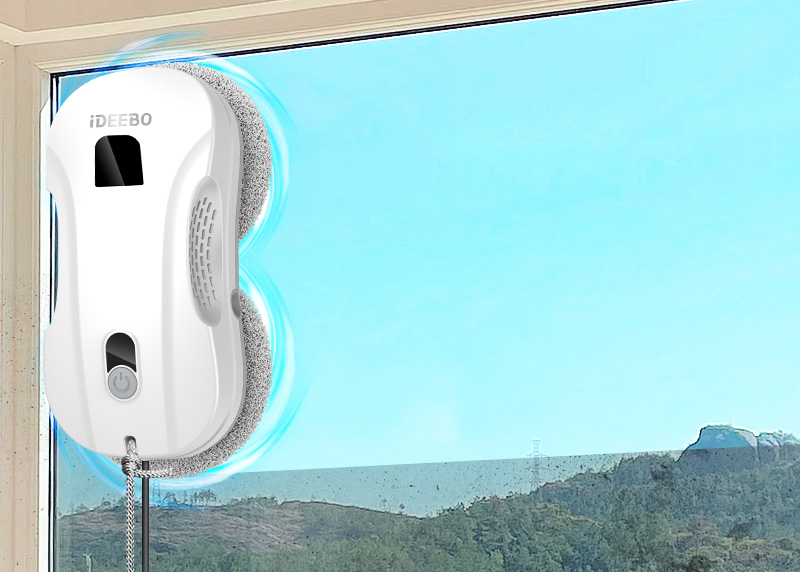
Like we said, the Autonomous Window-Glass Cleaning Robot isn’t just a gadget—it’s a complete solution to one of the most frustrating cleaning challenges. Here’s a closer look at its standout features and the real-world benefits they deliver.
1. Powerful Suction & Secure Grip
Feature: The robot uses a high-performance vacuum suction system to cling firmly to vertical glass, even at tall heights. In the Pro version, dual magnetic units clamp together through the glass for extra stability.
Benefit: Whether you live in a high-rise flat or have tall conservatory windows, the robot stays securely in place, eliminating the danger of leaning out or balancing on ladders.
2. Intelligent Path Planning
Feature: Using AI-powered mapping and edge-detection sensors, the robot calculates the size and shape of each window, cleaning systematically in a zig-zag or spiral pattern. It ensures no spot is missed, even around tricky corners and window handles.
Benefit: Unlike manual cleaning, where streaks and missed patches are common, you get consistent, professional-level results every time.
3. Multi-Stage Cleaning System
Feature: The robot combines rotating microfiber pads, a spray nozzle for water or eco-cleaning solution, edge brushes, and a final squeegee pass.
Benefit: Dust, fingerprints, bird droppings, and even greasy smudges are tackled effectively. The final squeegee ensures streak-free glass, giving you a finish that rivals professional cleaners.
4. App Control & Smart Home Integration
Feature: Through its companion app, you can start, pause, or schedule cleans. The robot also integrates with Alexa and Google Assistant for voice control.
Benefit: You don’t need to plan your day around cleaning chores. The robot fits into your schedule, running while you’re at work or asleep.
5. Safety & Backup Systems
Feature: Every unit comes with a safety tether, battery backup (up to 30 minutes of suction during power loss), and sensors that stop cleaning if rain or strong sunlight is detected outdoors.
Benefit: Peace of mind that the robot won’t fall, won’t damage itself, and won’t waste water or power when conditions aren’t ideal.
6. Easy Maintenance
Feature: Microfiber pads are washable and reusable, and the cleaning tank can be refilled with water or an eco-friendly solution.
Benefit: Low running costs compared to disposable wipes or repeated professional cleaning fees.
7. Financial & Lifestyle ROI
Feature: Priced between £399–£999 depending on the model, the robot is designed to pay for itself within one to two years of use.
Benefit: You save on professional cleaning costs while gaining back your time—and removing safety risks. For many, the convenience and peace of mind are worth the investment alone.
The Takeaway
By blending safety, intelligence, and convenience, the Autonomous Window-Glass Cleaning Robot makes spotless windows effortless. So it’s not only about clean glass—it’s about removing risk, reclaiming time, and enjoying a clearer view of life.
Comparison: Robot vs. Traditional Window Cleaning
When it comes to sparkling glass, you really have three options: clean it yourself, hire professionals, or let a robot do the work. Here’s how they stack up:
| Feature | Window-Cleaning Robot | DIY Cleaning | Professional Service |
| Safety | Very safe (no ladders needed, tether backup) | Risky on ladders, hard for high windows | Safe for you, but workers at risk |
| Convenience | Fully automatic, app-controlled | Time-consuming, tiring | Convenient, but must schedule and wait |
| Quality of Clean | Consistent, streak-free (AI path + squeegee finish) | Inconsistent, streak-prone | Professional-grade results |
| Cost Over 1 Year | £399–£999 one-time | £50–£100 (supplies) + your time | £800–£2,000+ recurring |
| Eco-Friendliness | Refillable pads + eco-solution | Varies (chemicals, paper use) | Neutral, but transport adds a footprint |
| Best For | Homes, apartments, businesses | Small, easy-to-reach windows | Large buildings, occasional deep cleans |
Analysis:
- DIY is the cheapest short-term but least safe and least effective for tall windows.
- Professional cleaning ensures quality but comes with high recurring costs.
- The robot provides a middle ground: upfront investment, but safe, automatic, and cost-saving long term.
Buying & Adoption Guide: Choosing the Right Window-Cleaning Robot
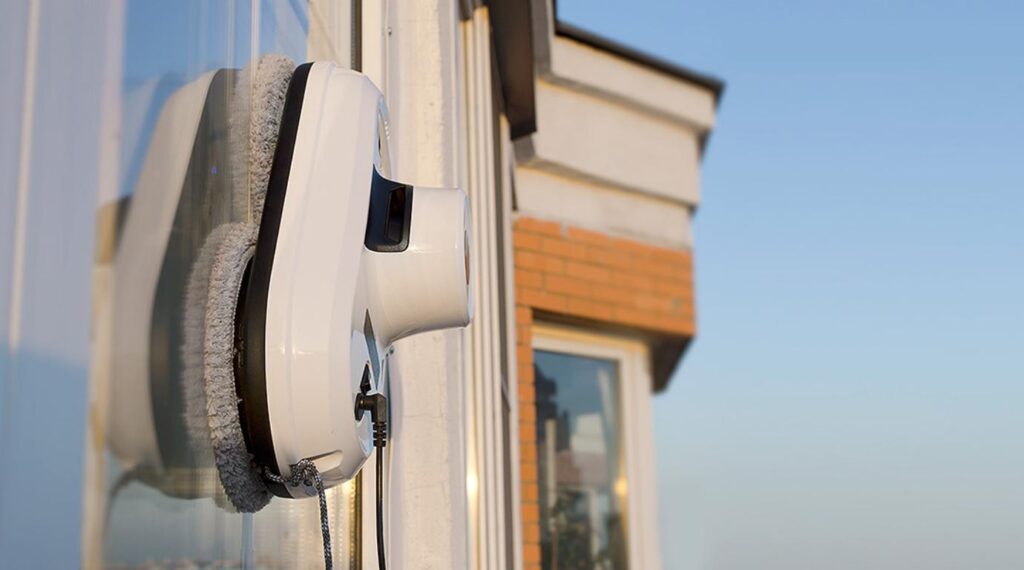
Not every household or business has the same needs, which is why the Autonomous Window-Glass Cleaning Robot is designed in different models. Whether you’re a homeowner, an apartment resident, or a business owner, there’s a version tailored for you.
1. Home Model – Simple & Convenient
The Home Model is compact, easy to use, and perfect for everyday households. It attaches to standard-sized windows with powerful suction, uses rotating microfiber pads with a spray nozzle, and delivers streak-free results.
- Best for: Families, busy professionals, and elderly homeowners.
- Strengths: Lightweight, affordable, and simple app control.
- Cost: Around £399–£499.
- Why choose it: If your main goal is to stop climbing ladders or wasting weekends on streaky DIY cleaning, this is the version for you.
2. Pro Model – High-Rise & Advanced Homes
The Pro Model adds a dual-magnetic design, meaning one unit operates outside and another inside, clamped together through the glass. This ensures extra stability on tall or exposed windows, even in high-rise apartments.
- Best for: Apartment residents on higher floors, luxury homes with tall windows, and glass balconies.
- Strengths: Handles outside surfaces safely, covers larger windows efficiently, extra cleaning power.
- Cost: £599–£749.
- Why choose it: Perfect for anyone living above the ground floor who wants spotless glass without dangerous leaning or expensive professional contracts.
3. Commercial Model – Business-Grade Performance
The Commercial Model is built for offices, shops, restaurants, and mid-sized buildings with glass facades. It includes larger solution tanks, stronger suction, and extended battery life to handle multiple windows in one session.
- Best for: Facility managers, retail owners, and small-to-medium office buildings.
- Strengths: High-capacity, app scheduling, and reliable streak-free presentation for storefronts.
- Cost: £899–£999.
- Why choose it: A cost-effective alternative to frequent professional cleaning contracts, reducing annual maintenance costs by thousands.
How to Decide
The right choice depends on your priorities:
- Homeowners → Home Model (easy, safe, affordable).
- Apartment dwellers → Pro Model (dual-magnetic, handles exterior safely).
- Businesses & property managers → Commercial Model (scale, ROI, professional presentation).
Think of the robot as an investment:
- A single year of professional services for a home or apartment often equals the cost of a robot outright.
- For businesses, the robot pays for itself within months by cutting recurring cleaning contracts.
- For elderly or busy households, the value comes in safety, time saved, and always enjoying bright, clear windows.
Final Tip
If you’re still unsure, you can always start with the Home Model. It’s the most affordable entry point and still delivers a professional-level finish. Once you experience how much easier life becomes, you’ll wonder how you ever lived without it.
Suggested Products & Brand Angles for a Window-Cleaning Robot
Ecovacs (Winbot series)
Already produces robotic window cleaners, but this concept could expand their portfolio with a more fully autonomous, indoor/outdoor
HOBOT (Taiwan)
A known player in the niche window robot space. They could refine their models with dual-magnetic clamping and better AI navigation.
iRobot (makers of Roomba)
A household robotics giant. A “Roomba for Windows” under their branding would instantly gain consumer trust.
Dyson
Known for suction technology and high-end appliances. A Dyson GlassBot would align with their sleek, futuristic brand image.
Samsung SmartThings Ecosystem
A natural fit within their smart-home range, integrated with SmartThings for scheduling and automation.
Kärcher
Famous for pressure washers and cleaning tools. A robotic window cleaner would be a logical extension of their cleaning tech heritage.
Startup Branding
Could also launch under fresh, modern names like GlassMate, ClearView AI, or ShineBot — positioned as the “next robot vacuum revolution, but for glass.”
Product Specs & Details
1. Home Model
Target user: Families, homeowners, and elderly users.
Key specs:
- Dimensions: ~25cm x 25cm, lightweight design (~2.5kg).
- Attachment: Vacuum suction, safe for standard window panes up to 3m tall.
- Cleaning System:
- Dual rotating microfiber pads (washable & reusable).
- Spray nozzle for water/eco-cleaning solution (120ml tank).
- Streak-free silicone squeegee pass.
- Navigation: AI-powered path planning with edge detection.
- App Control: Start, stop, scheduling; Alexa/Google compatible.
- Safety: Tether cord + 20 min battery backup.
- Noise level: ~55–60 dB (similar to a quiet fan).
- Price: £399–£499.
Best for: Everyday households with tall or hard-to-reach windows, sunrooms, or conservatories.
2. Pro Model (Dual Magnetic)
Target user: Apartment dwellers in high-rises, luxury homes with full-height glass.
Key specs:
- Dimensions: Slightly larger (~28cm x 28cm), ~3.2kg.
- Attachment: Dual-magnetic system (inside + outside robot clamp securely through glass).
- Cleaning System:
- Rotating microfiber pads with a stronger motor torque for stubborn dirt.
- 200ml spray tank for larger windows.
- Edge brushes for frame corners.
- Double-pass squeegee for streak-free finish.
- Navigation: Smart AI + Lidar scanning for big panes.
- App Control: Cloud-linked app with real-time cleaning progress map.
- Safety: Magnetic lock + tether cord + 30 min battery backup.
- Noise level: ~60–62 dB (slightly louder due to stronger suction).
- Price: £599–£749.
Best for: High-rise apartments or homes with difficult-to-reach exterior glass where safety is a concern.
3. Commercial Model
Target user: Businesses, offices, retail shops, mid-sized glass buildings.
Key specs:
- Dimensions: Larger (~35cm x 35cm), ~4kg.
- Attachment: Enhanced vacuum suction with industrial-grade pads.
- Cleaning System:
- Heavy-duty microfiber rollers + replaceable squeegee blades.
- 400ml cleaning solution tank.
- High-capacity pump for spraying even coverage.
- Navigation: Multi-window mapping, handles wide facades and repetitive cleaning.
- App Control: Fleet management app (multiple robots controlled at once).
- Safety: Tether cord, 45-minute battery backup, rain sensor for outdoor use.
- Noise level: ~65 dB (similar to conversation level).
- Price: £899–£999.
Best for: Shops, cafés, restaurants, and offices where glass presentation is directly tied to customer impressions.
Shared Features Across All Models
- Washable microfiber pads (lasts 6–12 months depending on use).
- Eco-friendly compatibility (works with plain water or enzyme-based cleaners).
- Auto-return feature (returns to the bottom corner when done for easy pickup).
- Scheduling (daily/weekly cleaning at set times).
- Alerts (tank empty, pads dirty, cleaning cycle complete).
Consumer Decision Guide
Buying an autonomous window-cleaning robot isn’t like picking up a spray bottle at the supermarket. It’s an investment—one designed to change how you think about home and business maintenance. To help you decide, let’s look at how different types of users benefit and why the specs make sense in real life.
Homeowners: Convenience Meets Safety
For homeowners with conservatories, tall bay windows, or skylights, cleaning has always meant one of two things: dragging out a ladder or leaving windows dirty. The Home Model changes that equation.
- Specs that matter: Lightweight (2.5kg), 120ml solution tank, vacuum suction, and a safe tether.
- Benefits in practice: No more balancing acts, no wasted weekends scrubbing, and streak-free finishes every time.
At £399–£499, it pays for itself within a year or two compared to calling professionals. But beyond money, it buys peace of mind—you’ll never worry about falling from a ladder just to keep your windows clean. Bones remain intact.
Apartment Dwellers: Safety First, Clear Views Always
If you live above the ground floor, cleaning exterior windows can feel impossible. The Pro Model is built exactly for you, with its dual-magnetic clamping design.
- Specs that matter: Stronger motors, larger 200ml tank, AI path mapping, 30-min battery backup.
- Benefits in practice: Secure cleaning on the outside of glass panes without leaning out dangerously.
At £599–£749, the Pro Model is often cheaper than hiring a professional crew once or twice a year. And instead of waiting months for your next scheduled cleaning, you control when your windows sparkle—every week, if you want. No dent in the wallet.
Businesses: Professional Presentation Without the Bills
For shops, cafés, restaurants, and small office buildings, clean windows are part of the customer experience. Dirty glass turns people away. The Commercial Model offers large-scale performance without constant outsourcing.
- Specs that matter: 400ml solution tank, industrial-grade pads, extended battery, fleet management app.
- Benefits in practice: Schedule overnight cleans, maintain spotless presentation daily, and save thousands annually on professional contracts.
At £899–£999, it’s a capital expense that pays back in months. For many businesses, the math is simple: better curb appeal = more foot traffic = higher revenue.
Elderly Homeowners: Independence Restored
For older adults, ladders and heavy scrubbing are out of the question. But that doesn’t mean they want to live with dirty windows. The Home Model gives independence back.
- Specs that matter: One-touch app start, quiet operation (55–60 dB), lightweight design.
- Benefits in practice: No physical strain, no risk, and a brighter home environment every day.
For families, it also offers peace of mind—knowing their parents or grandparents aren’t taking risks just to enjoy clean glass.
Why It’s Worth It
Across all models, the decision comes down to this: do you want to keep repeating the same frustrating cycle of scrubbing or scheduling, or do you want a one-time investment that makes window cleaning disappear into the background?
With washable microfiber pads, refillable tanks, AI-powered pathing, and built-in safety, this robot isn’t just another gadget—it’s a long-term solution.
Final Wrap-Up: A Clear View of the Future
We’ve heard it before: window cleaning is one of those chores we all wish we could ignore—until dirty glass ruins a view, dampens a room’s brightness, or makes a shopfront look neglected. The truth is, traditional methods are either unsafe, expensive, or simply inconvenient.
The Autonomous Window-Glass Cleaning Robot flips that story. It’s safe, intelligent, and designed for everyday life. For homeowners, it means no more ladders or streaks. For apartment dwellers, it means enjoying your city view without risk. For businesses, it means spotless presentation without the constant bills. And for elderly homeowners, it means independence without danger.
At first, this might feel like a luxury. But so did robot vacuums ten years ago, and look at the picture now: millions of households can’t imagine life without them. This is the same moment, but for windows. Once you try it, you’ll wonder how you ever lived without it.
Your home will feel brighter. Your business will look sharper. And you’ll never waste another weekend with a squeegee.
Because when technology gives you back time, safety, and peace of mind—it’s not just cleaning. It’s your freedom.

